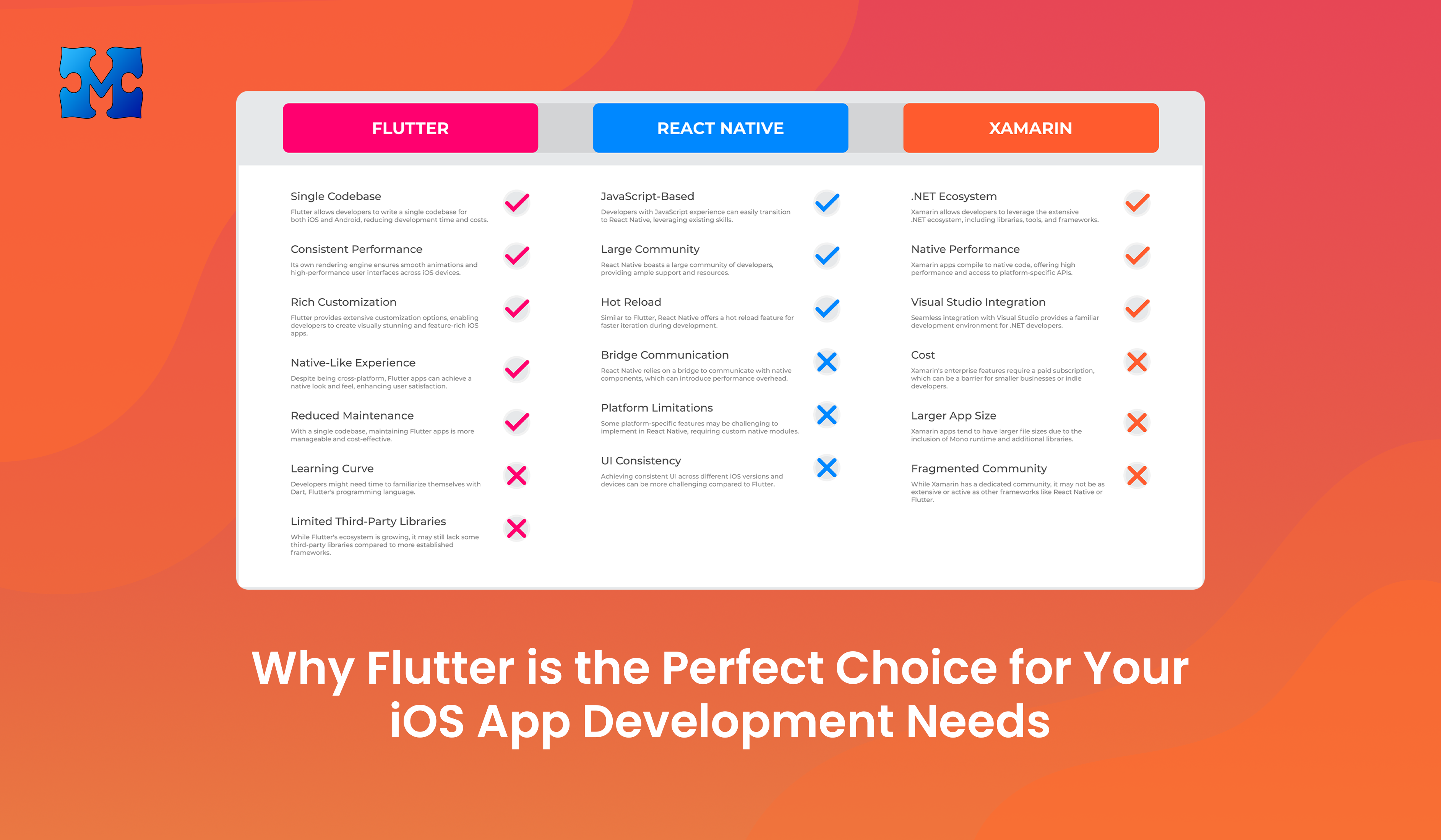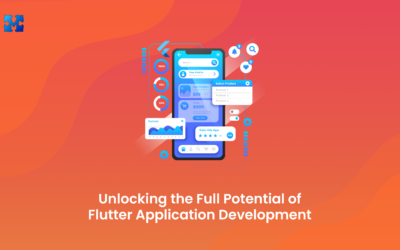In the rapidly evolving landscape of mobile app development, choosing the right framework is crucial for ensuring success. With the prominence of iOS devices and the demand for seamless user experiences, developers often face the dilemma of selecting the most suitable technology stack. While native iOS development has long been the traditional choice, a relatively newer contender has emerged as a compelling alternative – Flutter. In this article, we delve into why Flutter has become the perfect choice for fulfilling iOS app development needs, particularly for businesses seeking top-notch performance and efficiency.
The Rise of Flutter:
Flutter, an open-source UI software development kit (SDK) developed by Google, has gained significant traction in recent years. Its popularity stems from its ability to streamline the app development process, offering a plethora of advantages over traditional methods. Unlike native iOS development, which involves writing separate codebases for iOS and Android platforms using languages like Swift or Objective-C, Flutter allows developers to write a single codebase that runs seamlessly on both platforms. This inherent cross-platform compatibility drastically reduces development time and costs, making it an appealing option for businesses seeking efficient iOS application development services.
Challenges and Specific Needs in iOS App Development:
Developing iOS apps can present various challenges and specific needs for businesses, often leading to common pain points that hinder progress and success. Some of these pain points include:
Fast Market Entry: Businesses are under pressure to enter the market quickly to capitalize on opportunities and stay ahead of competitors. Traditional iOS app development methods may involve lengthy development cycles, hindering swift market entry and potentially causing businesses to miss out on valuable opportunities.
Budget Constraints: Budgetary limitations are a common concern for businesses of all sizes. Developing iOS apps traditionally can be expensive, particularly when separate codebases are required for iOS and Android platforms. This can strain budgets and make it challenging for businesses to allocate resources effectively.
Resource Management: Managing resources, including development talent and time, is crucial for successful iOS app development. Businesses may struggle to find skilled iOS developers or face constraints in managing development timelines effectively, leading to delays and inefficiencies.
Platform Fragmentation: iOS devices come in various versions and screen sizes, leading to platform fragmentation. Ensuring consistent performance and user experience across different iOS versions and devices can be complex and time-consuming for developers.
Flutter’s Solutions to These Problems:
Flutter addresses these challenges and specific needs in iOS app development by offering solutions that cater to the unique requirements of businesses:
Rapid Development: Flutter’s hot reload feature enables developers to make changes to the code and see the results instantly, significantly reducing development time. This rapid iteration process facilitates faster prototyping and iteration, allowing businesses to enter the market quickly and seize opportunities.
Cost-Effectiveness: With Flutter, businesses can write a single codebase for both iOS and Android platforms, reducing development costs associated with maintaining separate codebases. This approach enables businesses to maximize their resources and allocate budgets more effectively, making iOS app development more accessible and affordable.
Efficient Resource Management: Flutter’s cross-platform development approach simplifies resource management by allowing businesses to leverage existing talent across both iOS and Android platforms. Developers can work collaboratively on a single codebase, streamlining development processes and maximizing efficiency.
Consistent Performance: Flutter’s rendering engine ensures consistently smooth animations and high-performance user interfaces across different iOS versions and devices. By providing a unified development framework, Flutter helps businesses overcome platform fragmentation challenges and deliver consistent user experiences.
Additional Benefits of Flutter for iOS Development:
- Rich Customization Options: Flutter provides a wide range of customizable widgets and libraries, empowering developers to create stunning and feature-rich iOS apps with ease. From complex animations to intricate UI elements, Flutter offers the flexibility and tools necessary to bring creative visions to life, thereby enhancing the overall user experience.
- Native-Like Experience: Despite being a cross-platform framework, Flutter enables developers to achieve a native look and feel for iOS apps. By utilizing platform-specific widgets and adhering to Apple’s Human Interface Guidelines (HIG), Flutter apps seamlessly integrate with the iOS ecosystem, delivering an authentic user experience that feels native to iOS users.
- Reduced Maintenance Efforts: With a single codebase for both iOS and Android, maintaining Flutter apps becomes significantly more manageable and cost-effective. Developers can implement updates, fix bugs, and introduce new features simultaneously across platforms, minimizing the resources and time required for ongoing app maintenance.
- Growing Community and Support: Flutter boasts a vibrant community of developers, contributors, and enthusiasts who actively contribute to its ecosystem. This extensive support network translates to ample learning resources, tutorials, plugins, and third-party libraries, empowering developers to overcome challenges and maximize the potential of Flutter for iOS app development.
Comparison with Other Frameworks:
When evaluating Flutter for iOS app development, it’s essential to consider how it stacks up against other popular frameworks like React Native and Xamarin. Here’s a comparative analysis highlighting the pros and cons of each:
Flutter:
| Pros | Cons |
| Single codebase: Flutter allows developers to write a single codebase for both iOS and Android, reducing development time and costs. | Learning curve: Developers might need time to familiarize themselves with Dart, Flutter’s programming language. |
| Consistent performance: Its own rendering engine ensures smooth animations and high-performance user interfaces across iOS devices. | Limited third-party libraries: While Flutter’s ecosystem is growing, it may still lack some third-party libraries compared to more established frameworks. |
| Rich customization: Flutter provides extensive customization options, enabling developers to create visually stunning and feature-rich iOS apps. | |
| Native-like experience: Despite being cross-platform, Flutter apps can achieve a native look and feel, enhancing user satisfaction. | |
| Reduced maintenance: With a single codebase, maintaining Flutter apps is more manageable and cost-effective. |
React Native:
| Pros | Cons |
| JavaScript-based: Developers with JavaScript experience can easily transition to React Native, leveraging existing skills. | Bridge communication: React Native relies on a bridge to communicate with native components, which can introduce performance overhead. |
| Large community: React Native boasts a large community of developers, providing ample support and resources. | Platform limitations: Some platform-specific features may be challenging to implement in React Native, requiring custom native modules. |
| Hot reload: Similar to Flutter, React Native offers a hot reload feature for faster iteration during development. | UI consistency: Achieving consistent UI across different iOS versions and devices can be more challenging compared to Flutter. |
Xamarin:
| Pros | Cons |
| .NET ecosystem: Xamarin allows developers to leverage the extensive .NET ecosystem, including libraries, tools, and frameworks. | Cost: Xamarin’s enterprise features require a paid subscription, which can be a barrier for smaller businesses or indie developers. |
| Native performance: Xamarin apps compile to native code, offering high performance and access to platform-specific APIs. | Larger app size: Xamarin apps tend to have larger file sizes due to the inclusion of Mono runtime and additional libraries. |
| Visual Studio integration: Seamless integration with Visual Studio provides a familiar development environment for .NET developers. | Fragmented community: While Xamarin has a dedicated community, it may not be as extensive or active as other frameworks like React Native or Flutter. |
In summary, each framework offers its unique set of advantages and drawbacks. Flutter excels in providing a seamless cross-platform development experience with consistent performance and rich customization options. However, developers should carefully weigh their project requirements, team expertise, and long-term goals to choose the most suitable framework for their iOS app development needs.
Conclusion:
In conclusion, when considering iOS app development, Flutter emerges as a top contender, offering unparalleled efficiency, performance, and versatility. By harnessing Flutter’s capabilities, businesses can streamline their development processes, reduce costs, and deliver high-quality iOS apps that resonate with users.
To take the next step towards realizing your app development goals, we encourage you to reach out for a consultation with our experienced team. Whether you’re planning your next project or seeking to migrate an existing app, our experts can guide you through the process and demonstrate the potential of Flutter for your specific needs.
Don’t miss out on the opportunity to leverage the power of Flutter for your iOS app development endeavors. Contact us today to schedule a consultation and embark on a journey towards building exceptional mobile experiences.




